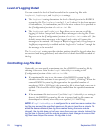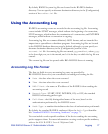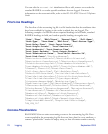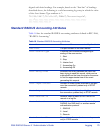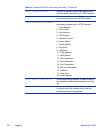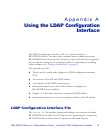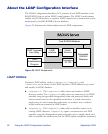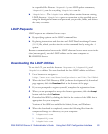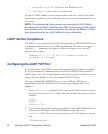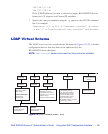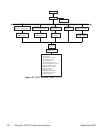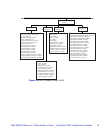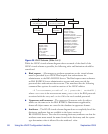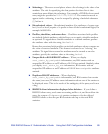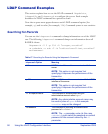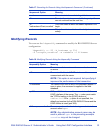84 Using the LDAP Configuration Interface September 2005
Z nsldapssl32v30.dll (if you are on a Windows host)
Z libldap30.so (if you are on a Solaris host)
To run the LDAP utilities, execute them from this directory. If you set the path
environment variable to point to this directory, you can run them any location on
the system.
NOTE: The examples that follow assume you are using the LDAP utilities
provided as part of the Sun ONE Directory SDK. If you are using LDAP utilities
from another source, the command options you use may be different. Consult
the documentation for your LDAP utilities for more information.
LDAP Version Compliance
The LDAP server software that has been incorporated into RSA RADIUS Server
is compliant with version 2 of the LDAP specification. Therefore, we suggest
using the
-V 2 command line option to direct the utilities to use version 2
features. For example:
ldapmodify -c -V 2 -p 354 -D "cn=admin,o=radius"
-w radius -f filename
Configuring the LDAP TCP Port
To avoid conflicts with LDAP services that may already be installed, the default
TCP port number for communication between RSA RADIUS Server and the
LDAP client is 667. If you are certain that there will not be any conflicts, you can
change this port number to 389, the standard LDAP TCP port.
You can configure RSA RADIUS Server to use a different TCP port to
communicate with the LDAP client. In the following example, port 354 is
assigned.
1In the
radius.ini configuration file, create an [LDAP] section if one does
not exist, and set the
TCPPort field to the port number you want to use. For
example:
[LDAP]
Enable = 1
TCPPort = 354
2 If you want to specify the interfaces on which you want RSA RADIUS Server
to listen for LCI requests, add a [LDAPAddresses] section to the
radius.ini file. This section should contain a list of IP addresses, one per
line:
[LDAPAddresses]



